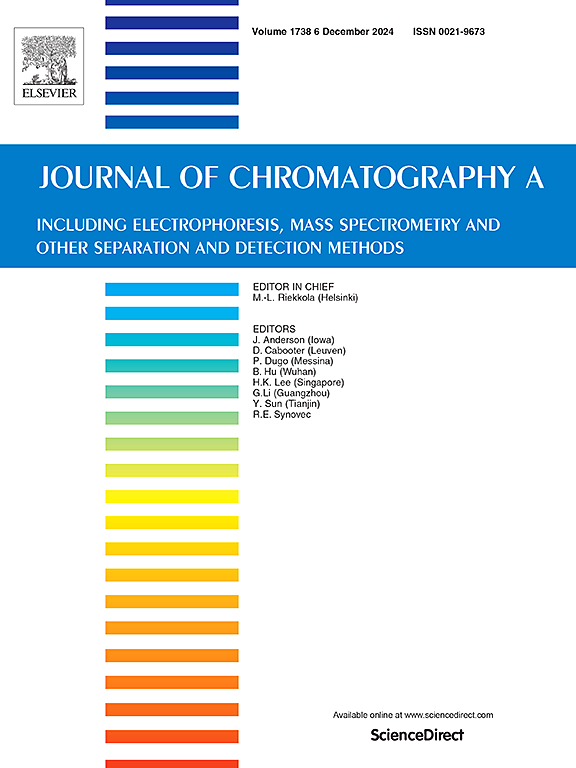Determination of carboxyatractyloside, the main toxic component of Xanthium strumarium L., and alkaloid toxins in soybean by liquid chromatography tandem mass spectrometry
IF 3.8
2区 化学
Q1 BIOCHEMICAL RESEARCH METHODS
引用次数: 0
Abstract
The presence of carboxyatractyloside (CAT) in Xanthium strumarium L. (cocklebur weed) presents a high risk for both human and animal health. In this paper, we report a liquid chromatography tandem mass spectrometric (LC-MS/MS) method for the determination of CAT in soybean intended for animal feed. The herein described approach involves a fast sample preparation utilising QuEChERS extraction followed by dSPE clean-up. The optimised mobile phase composition flowing through an HPLC column packed with C18 fused-core particles consisted of alkaline conditions (pH = 8.8) in the aqueous eluent and pure methanol as the organic modifier. In this manner, it was also suitable for the analysis of tropane and ergot alkaloids together with CAT, which was attempted for the first time and may improve the analysis efficiency and reduce costs. During the method validation the matrix effect was also investigated, which clearly showed that matrix-matched calibration or standard addition is needed for appropriate quantification, mainly at low levels. The recoveries were between 94 % and 115 %, and the RSD % varied from 2.0 % to 7.3 %. The limits of quantification for alkaloids and CAT were 1 µg/kg and 100 µg/kg, respectively. The method implementation in other LC-MS/MS instruments was also tested. Finally, the validated method was successfully applied on soybean samples naturally contaminated with cocklebur.
求助全文
约1分钟内获得全文
求助全文
来源期刊

Journal of Chromatography A
化学-分析化学
CiteScore
7.90
自引率
14.60%
发文量
742
审稿时长
45 days
期刊介绍:
The Journal of Chromatography A provides a forum for the publication of original research and critical reviews on all aspects of fundamental and applied separation science. The scope of the journal includes chromatography and related techniques, electromigration techniques (e.g. electrophoresis, electrochromatography), hyphenated and other multi-dimensional techniques, sample preparation, and detection methods such as mass spectrometry. Contributions consist mainly of research papers dealing with the theory of separation methods, instrumental developments and analytical and preparative applications of general interest.
 求助内容:
求助内容: 应助结果提醒方式:
应助结果提醒方式:


